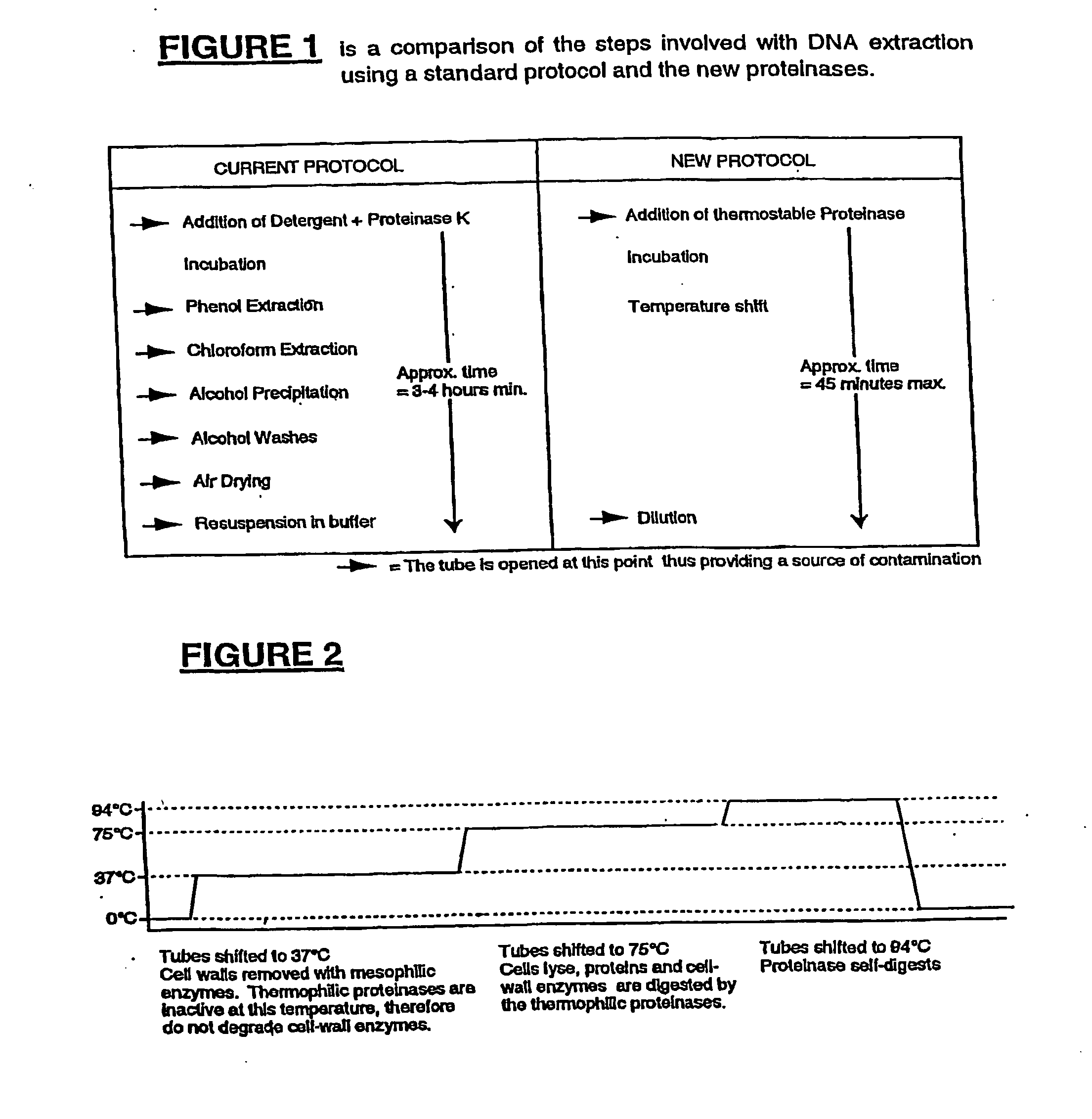Thermostable proteinases from thermophilic bacteria
a technology of thermophilic bacteria and proteinases, which is applied in the direction of biochemistry apparatus and processes, enzymes, sugar derivatives, etc., can solve the problems of contaminating samples, requiring long purification procedures, and requiring standard nucleic acid extraction techniques that are problematic, so as to improve the standard of molecular biology diagnostic techniques and reduce contamination. , the effect of reducing the number o
- Summary
- Abstract
- Description
- Claims
- Application Information
AI Technical Summary
Benefits of technology
Problems solved by technology
Method used
Image
Examples
Embodiment Construction
[0091] With reference to the figures by way of example only, there is provided a method for the preparation of DNA samples for polymerase chain reaction which removes contaminating proteins and inhibitors from samples, and provides an alternative to existing procedures.
[0092] FIG. 1 illustrates the difference in the number of steps, time taken and likely introduction of contaminants between standard protocols and the improved protocol of the present invention.
[0093] The method of the present invention also preferably includes the addition of at least one mesophilic enzyme and at least one non-specific thermophilic enzyme to a sample containing DNA for testing and amplification via PCR.
[0094] The sample is then incubated for a preferred period at 37.degree. C. to effect removal of any cell walls via activity of the mesophilic enzymes.
[0095] The temperature is then increased to 75.degree. C. as required to effect one or more of lysis of cells, digestion of proteins, digestion of cell-...
PUM
| Property | Measurement | Unit |
|---|---|---|
| temperature | aaaaa | aaaaa |
| temperature | aaaaa | aaaaa |
| temperature | aaaaa | aaaaa |
Abstract
Description
Claims
Application Information
 Login to View More
Login to View More - R&D
- Intellectual Property
- Life Sciences
- Materials
- Tech Scout
- Unparalleled Data Quality
- Higher Quality Content
- 60% Fewer Hallucinations
Browse by: Latest US Patents, China's latest patents, Technical Efficacy Thesaurus, Application Domain, Technology Topic, Popular Technical Reports.
© 2025 PatSnap. All rights reserved.Legal|Privacy policy|Modern Slavery Act Transparency Statement|Sitemap|About US| Contact US: help@patsnap.com

